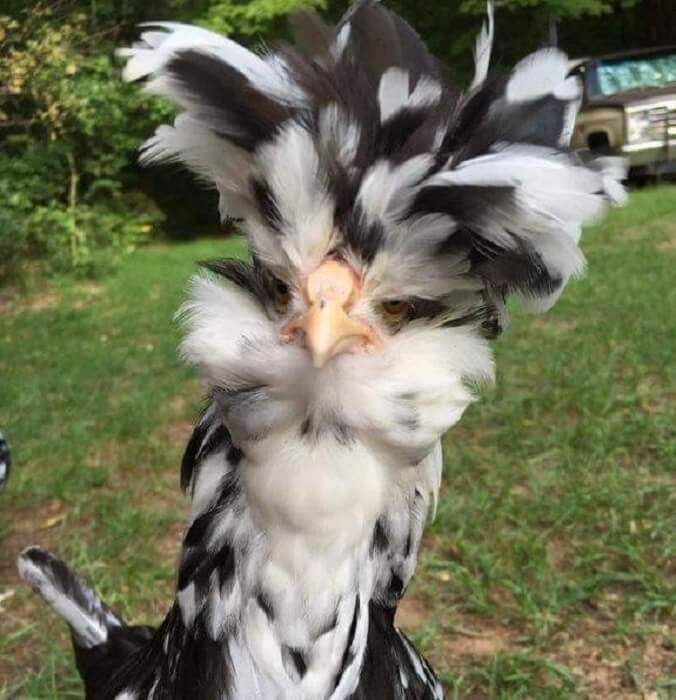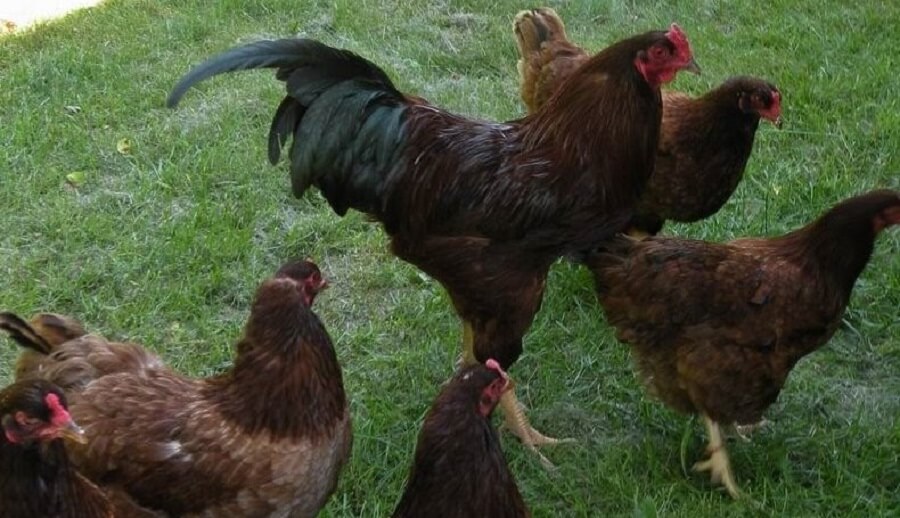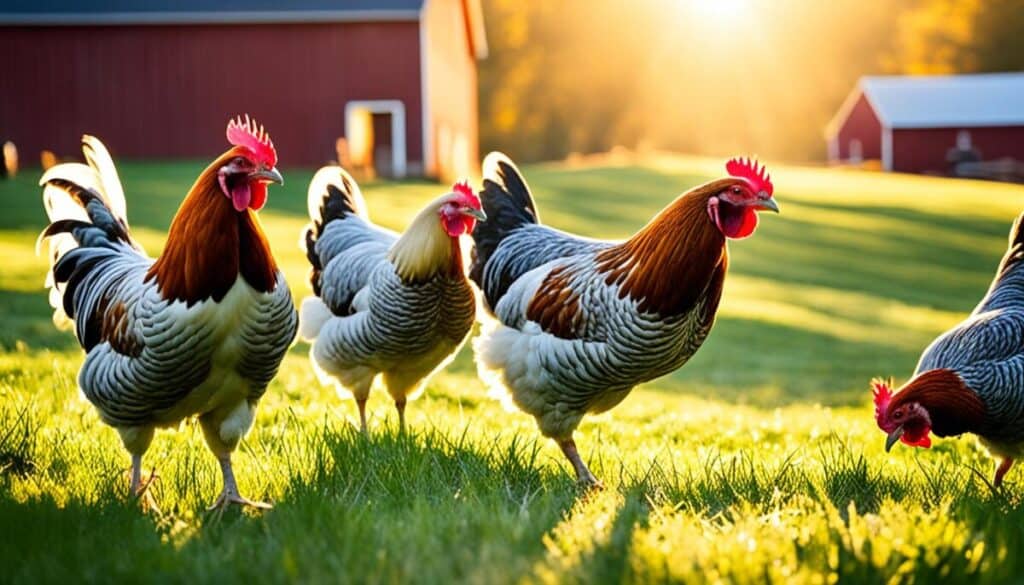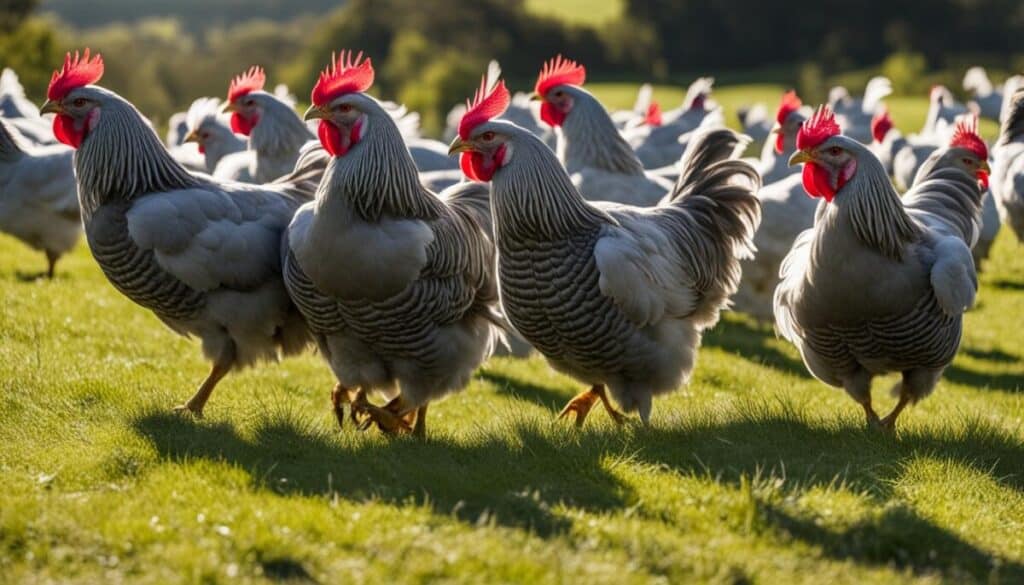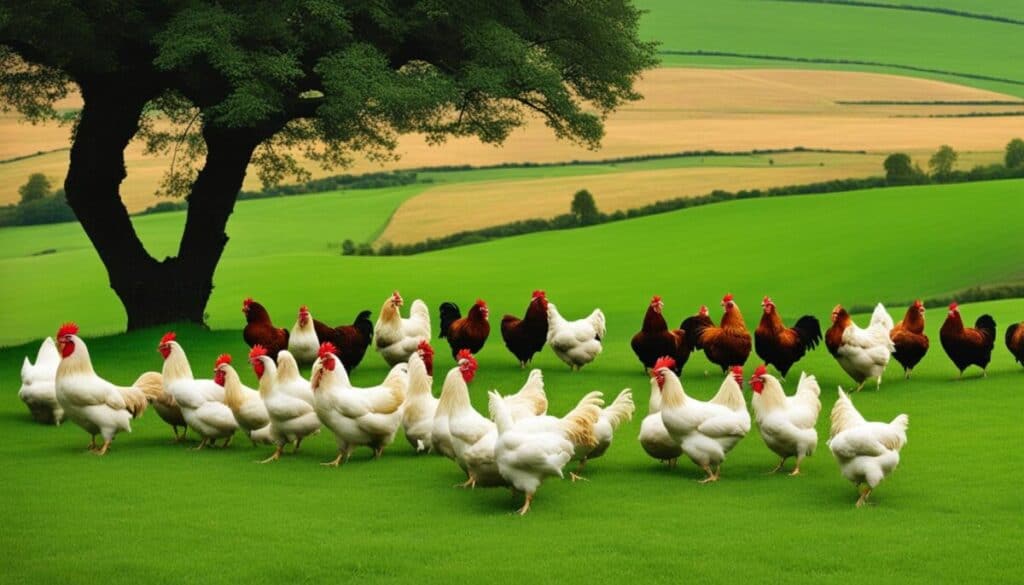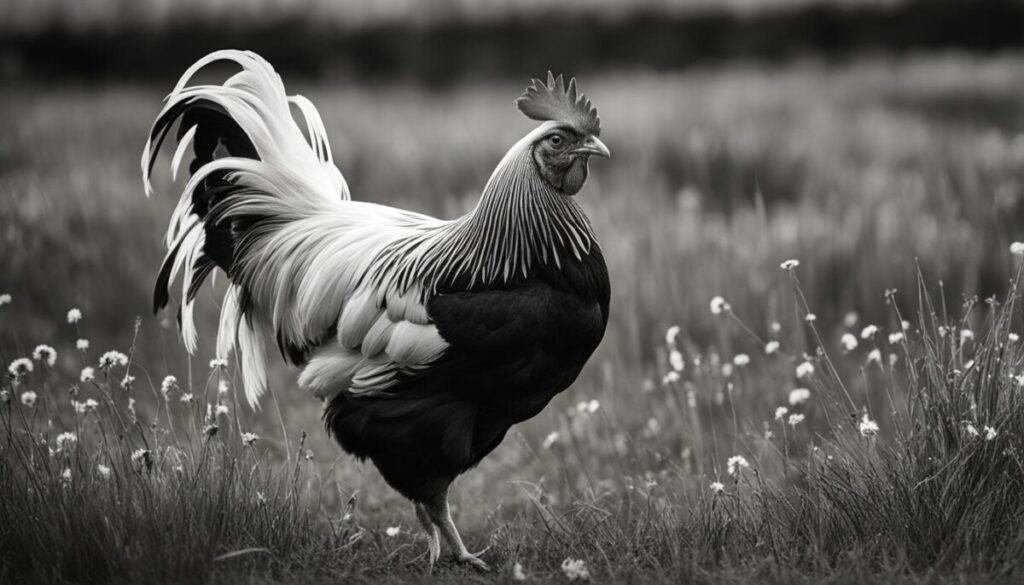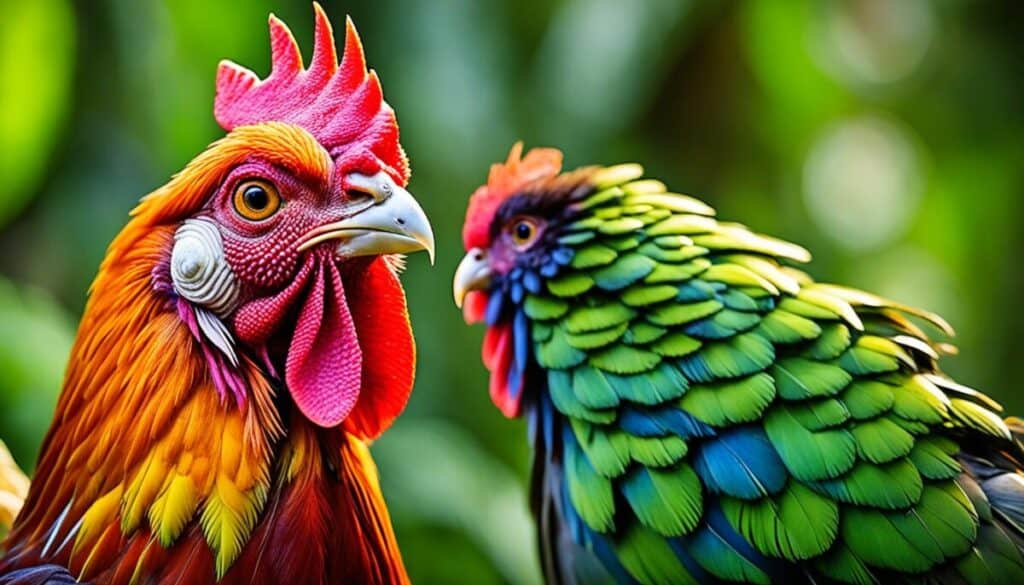As chicken raising grows in popularity from backyards to small farms, many homesteaders want to raise heritage chickens that will provide both eggs and meat. Raising heritage chickens helps to conserve and preserve chicken breeds that are becoming rare and endangered from modern breeding practices.
For others, modern breeds have ethical issues attached to them because of the unhealthy growth of the chickens and the shorter lifespans.
This article will cover seven forgotten heritage chicken breeds that have been used for meat and eggs traditionally. Some of these breeds are rarer and may have to be special ordered, while others can often be found locally.
Skip Ahead
- Heritage Chickens Are Bred For Meat and Egg Production
- What’s A Heritage Chicken Breed?
- Buckeye Chicken
- Hamburg Chicken
- Sussex Chickens: Roman Chicken
- Houdan Chicken
- Andalusian Chickens
- Turken Naked Neck Chickens:
- Sultan Chicken
- Maline Chicken
- Blue Hen of Delaware Chicken
- Scots Grey Chicken
- Old English Game Chickens
- Scots Dumpy Chickens:
- Lakenvelder Chicken Breed: Striking Beauties
- Indonesian Kedu Chicken Breed
- Frequently Asked Questions
- Conclusion
If you’ve been following our Best Chicken Breeds Series, then you already know the best chicken breeds for eggs, meat, and the most popular dual-purpose breeds. You also know which breeds are popular for looks and which ones lay brown or blue, or multi-colored eggs.
Heritage Chickens Are Bred For Meat and Egg Production
Most heritage chicken breeds are great dual-purpose chickens because historically, people didn’t buy eggs or chicken from a store. They raised chickens and wanted hens that laid eggs reguarly and roosters that could plump up for Sunday dinner.
As a result most heritage breeds are great as meat and egg birds. Modern hybrid breeds may specialize in greater production either for eggs or for meat, but never both.
What Heritage Breeds Are Ideal For Both Meat And Eggs? 17 heritage chicken breeds have traditionally been used for more egg and meat production. Several of these breeds are super egg layers, while other breeds are larger breeds that produce more meat in the roosters. Other heritage breeds are fameous for their delicate flavor not found in any other chicken breed.
The best heritage dual-purpose chicken breeds are:
| Breed | Meat Production Weight (lbs) | Egg Production (per year) | Origins | |||
|---|---|---|---|---|---|---|
| Buckeye | 9 | 180 | Developed in Ohio, USA; known for its hardiness and utility. | |||
| Hamburg | 5 | 220 | Originated in Germany; known for its beautiful plumage and egg-laying ability. | |||
| Sussex | 9 | 180 | Originated in England; versatile for meat and egg production. | |||
| Houdan | 8 | 180 | French breed; known for its distinctive crest and for being a good layer. | |||
| Andalusian | 7 | 165 | From Andalusia, Spain; known for its striking blue plumage and good laying ability. | |||
| Turken (Naked Neck) | 7 | 120 | Origin is debated, possibly Eastern Europe; unique for its bare neck and heat tolerance. |
| Climate | Personality | Use | Size | Eggs/ Yr | Brooder | Forages |
| Cold & Hot | Friendly | Meat & Eggs | M: 9 lbs
F: 6 lbs | 180 | Yes | Yes |
- Cold and Hot Climate Tolerant
- Great for First Timers because of Friendliness
- Predator Resistant
Buckeye Chicken Breed: Heritage Poultry Guide
Hamburg Chickens: Dutch Everyday Layers
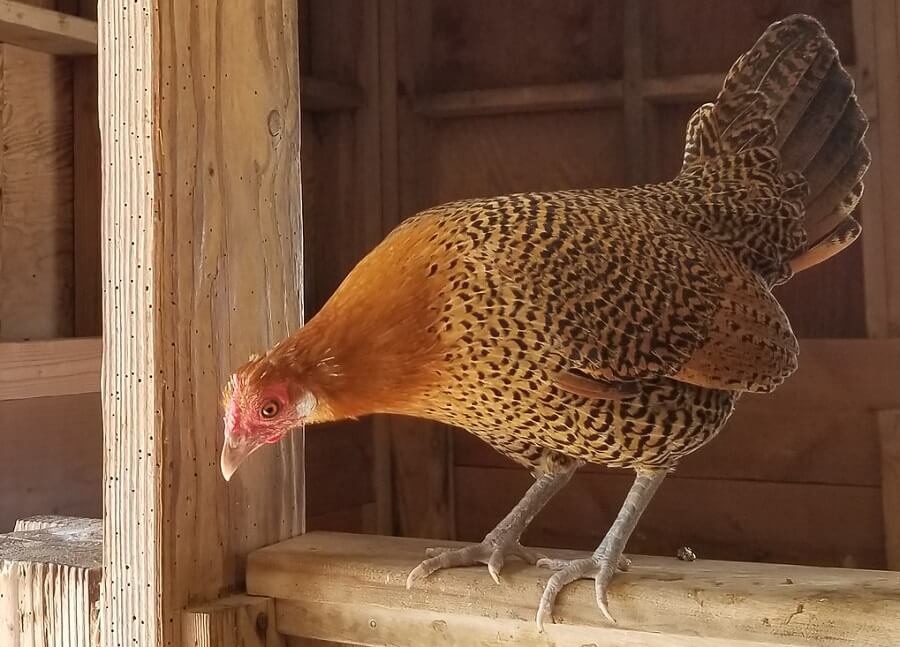
Photo Credit: CarbonNYC [in SF!] Flickr
Hamburgs are a startling lovely bird. Their black and white plumage is beautiful to look at. In fact, Hamburg chickens were reportedly the first birds in a poultry contest in the early 1800s. The judge was a bartender and the prize, a copper kettle.
They were originally called Peasant Fowl and Yorkshire Fowl. They originated in Holland. In Europe, they are often called Hamburgh.
| Climate | Personality | Use | Size | Eggs/ Yr | Brooder | Forages |
| Variety | Active | Eggs | M: 5 lbs
F: 4 lbs | 225 | No | Yes |
- Exotic-looking show birds
- Long lifespan of egg laying
- Excellent at free-ranging and avoiding predators
- Not great in small spaces
Hamburg Chicken Breeds: Care Tips & Facts
Welcome to our comprehensive guide to Hamburg chickens! If you’re looking for information on rare…
Sussex Chickens: Roman Chickens- A Staple To The British
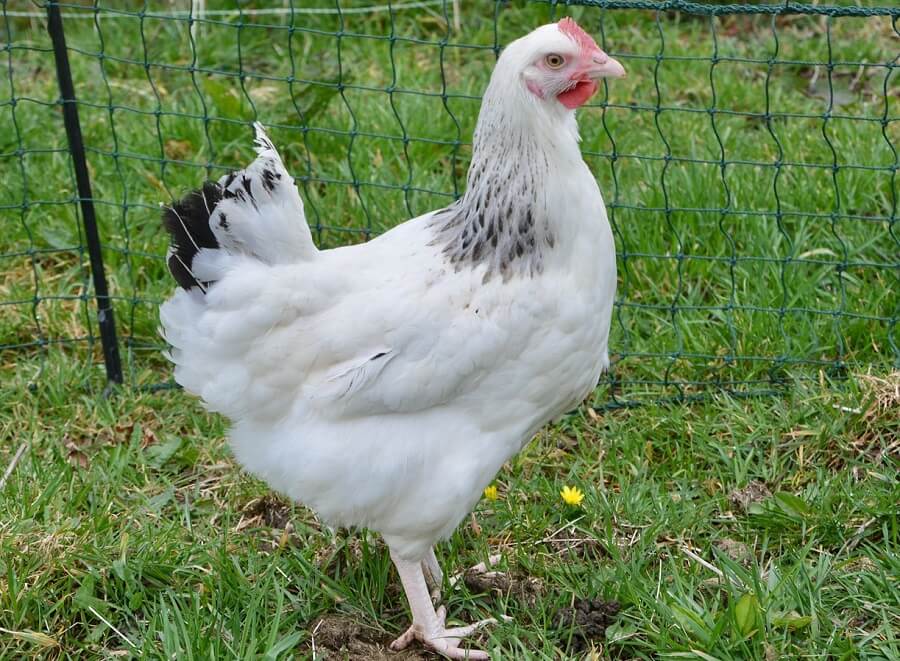
Sussex chickens originated in England around the time of the Roman invasion, in about 43 AD. The original Sussex chickens didn’t look like today’s chickens and are believed to be mostly brown and speckled. They were bred with Roman fowl. Romans introduced the English to poultry as a main table dish.
| Climate | Personality | Use | Size | Eggs/ Yr | Brooder | Forages |
| Hot & Cold | Gentle, Calm | Meat & Eggs | M: 9 lbs
F: 7 lbs | 180 | Yes | Yes |
- Perfect All-around chicken
- Happy in all climates
- Dual purpose chicken
Sussex Chicken: Breed Traits, Care & Eggs Info
If you’re interested in raising chickens, the Sussex breed should be on your radar. These…
Houdan Chicken; Excellent Heat Tolerant Layer

Photo Credit: Flickr by Ann Porteus
About 60 miles west of France is the town of Houdan, which Houdan chickens were named for. Houdans are believed to have originated from the Roman’s 5 toed chicken breeds and developed in France and Belgium.
They came from the old fowl found in the area that were bred with the old crested race from Normandy. They have been called “Normandy Fowl” and “French Chicken.”
Houdans are beloved for their tasty meat. They have earned the coveted “Label Rouge” certification for excellent meat and taste in France. In the 1700s Houdans were the chicken of aristocrats and were served in the French courts. They were Imported to England in 1865 but failed to become widely popular.
| Climate | Personality | Use | Size | Eggs/ Yr | Brooder | Forages |
| Hot | Gentle | Meat & Eggs | M: 8 lbs
F: 6.5 lbs | 180 | Yes | Predator Weak |
- Dual Purpose Birds
- Great for backyards
- Heat tolerant
Houdan Chicken Breed: Guide to Care
If you’re looking for a unique and interesting breed of chicken to add to your…
Andalusian Chickens, Spanish Dual Purpose Chickens

The Andalusian originates from Andalucia, Spain. The history of the bird isn’t known but it likely came from the Castille breed. It resembles a Spanish Chicken but is lighter in weight.
They are one of the oldest Mediterranean chicken breeds.
In 1846, Mr. Leonard Barber imported it to England. The birds were originally a dull grey color. They were then developed and bred in England to produce beautiful, consistent blue coloring.
| Climate | Personality | Use | Size | Eggs/ Yr | Brooder | Forages |
| Hot | Active
Gentle | Eggs | F: 7 lbs
M: 5.5 lbs | 165 | No | Yes |
- Strong Forager
- Beautiful Plumage
- Threatened Species
Andalusian Chicken Breed: Unique Traits
Turken Naked Neck Chickens: Not A Turkey

Photo Credit: Cacklehatchery.com
The Turken Naked Neck is also called “Naked Neck’ although there is another chicken breed with a naked neck, the French Naked Neck chicken.
You might also see it referred to as the Transylvanian Naked Neck because it originated in Transylvania, or Eastern Hungary and Romania.
The name Turken originally came because it was believed to be a cross between a turkey and a chicken. Although a crossbreed would produce sterile offspring. Instead, the naked neck comes from a DNA molecule called BMPas, which blocks feathers.
| Climate | Personality | Use | Size | Eggs/ Yr | Brooder | Forages |
| Hot & Cold | Gentle, Calm | Meat | M: 7 lbs
F: 6 lbs | 120 | No | Yes |
- Rare Turkey-looking chicken
- Disease resistant
- Perfect for backyards
Naked Neck (Turken) Chicken Care and Breed Facts
Welcome to the fascinating world of Naked Neck (Turken) chickens! If you’re looking to add…
Sultan Chicken: Royal Birds With An Elegant Flair
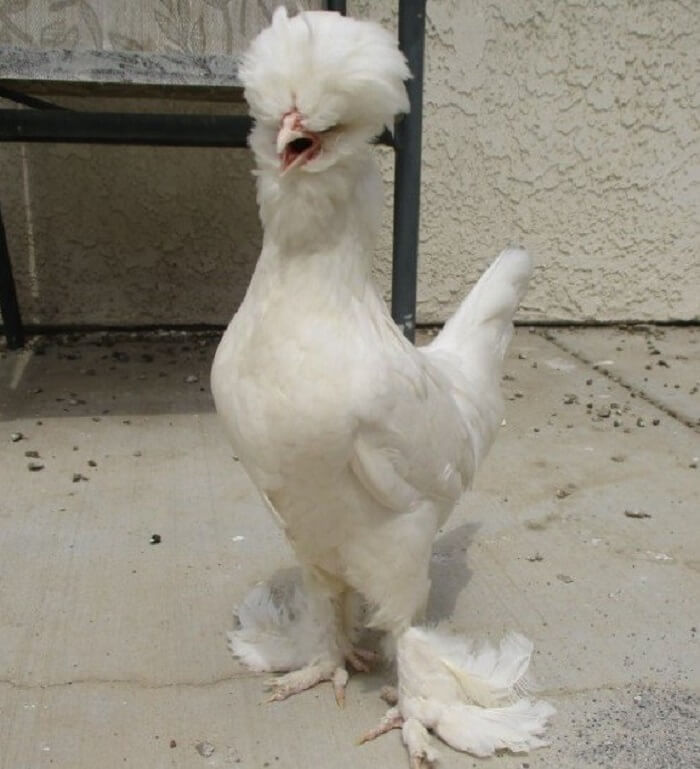
Photo Credit: Cacklehatchery.com
The Sultan came from Turkey and were originally used as ornamental birds in the Sultan’s Palace during the time of the Ottoman Empire. They were favored because they didn’t’ scratch or peck at the royal gardens. They are also known as Serai, Tuvok, or Serai Tarook in Turkey, which means Sultan Chickens.
In 1854, Ms Elizabeth Watts had them imported from Constanopal to England where they arrived very dirty and worn. After several months, she was able to confirm they birds were pure white.
| Climate | Personality | Use | Size | Eggs/ Yr | Brooder | Forages |
| Not Wet | Tame, Gentle | Ornamental & Meat | M: 6 lbs
F: 4 lbs | 50 | No | Not a lot |
- Royal chickens with fancy attire
- Perfect for beautifying a flock
- Excellent foragers
Sultan Chicken Breed: Ornate Fowl Essentials
Welcome to this comprehensive guide on Sultan chickens, a unique and ornate breed of fowl…
Maline Chickens Exquisite Taste
Malines Chicken Breed: Heritage & Raising Tips
Blue Hen of Delaware Chicken: Stunningly Unique
Delaware Chicken Breed: Raising & Care Tips
Scots Grey Chicken- Supurbly Adaptable
Scots Grey Chickens: Heritage Breed Guide
Scots Grey chickens are a rare poultry breed that has garnered attention for its historical…
Old English Game Chickens: Warriors
Scots Grey Chickens: Heritage Breed Guide
Scots Grey chickens are a rare poultry breed that has garnered attention for its historical…
Scots Dumpy Chickens:
Scots Dumpy Chickens: Heritage Breed Guide
Welcome to our comprehensive heritage breed guide, where we will be exploring the charming world…
Lakenvelder Chicken Breed: Striking Beauties
Lakenvelder Chicken Breed: Heritage & Care
Welcome to the world of Lakenvelder chicken breeds, a rare and beautiful heritage breed that…
Indonesian Kedu Chicken Breed
Indonesian Kedu Chicken Breed: A Rare Gem
Frequently Asked Questions
What are Heritage Chickens?
Heritage chickens are breeds that have been recognized by agricultural organizations like the American Poultry Association for their historical significance, genetic diversity, and adaptation to outdoor environments. These breeds were commonly raised before the mid-20th century, before the rise of commercial poultry production.
Why Raise Heritage Chickens?
Raising heritage chickens supports biodiversity and the preservation of historic breeds. These chickens often have traits such as disease resistance, longevity, and the ability to naturally mate. Additionally, they can provide unique and flavorful eggs and meat.
How do Heritage Chickens Differ from Commercial Breeds?
Heritage chickens are typically slower growing and live longer than commercial breeds. They are better suited to free-range conditions, displaying strong foraging behaviors and a higher level of predator awareness. Commercial breeds are often selected for rapid growth and high productivity in controlled environments.
What are Some Examples of Heritage Chicken Breeds?
Examples include the Plymouth Rock, Rhode Island Red, Sussex, Orpington, and Wyandotte. Each breed has unique characteristics, such as plumage color, body size, and temperament.
Can Heritage Chickens Be Used for Egg Production?
Yes, many heritage breeds are excellent layers, offering a good supply of eggs. While they may not lay as many eggs as some commercial hybrids, their eggs can vary in size, color, and flavor, adding value to small-scale farming and homesteading operations.
Are Heritage Chickens Suitable for Meat Production?
While heritage chickens grow more slowly than commercial meat breeds, they are praised for their flavorful and firm meat. Breeds like the Jersey Giant and the Dorking are particularly well-regarded for meat production.
How Do I Care for Heritage Chickens?
Heritage chickens generally require the same basic care as other chickens, including access to clean water, a balanced diet, and secure housing. However, they thrive in environments that allow for natural behaviors like foraging, dust bathing, and roosting. It’s important to protect them from predators and to provide adequate space for their well-being.
How Can I Start Raising Heritage Chickens?
Begin by researching to find a breed that matches your climate, space, and goals. Purchase chicks or hatching eggs from reputable breeders or preservation organizations to ensure genetic diversity and health. Starting with a small flock allows you to learn about their specific needs and behaviors.
Are Heritage Chickens More Disease Resistant?
Heritage chickens can exhibit strong natural disease resistance due to their genetic diversity and the traditional breeding practices that maintained robust health traits. However, like all animals, they can still be susceptible to common poultry diseases, so good management and biosecurity practices are essential.
How Can I Help Preserve Heritage Chicken Breeds?
Raising heritage chickens, participating in breed clubs and societies, and sharing knowledge about these breeds can all contribute to their preservation. Supporting farms and organizations that focus on heritage poultry conservation is also crucial for maintaining genetic diversity and heritage breed populations.
Conclusion
Heritage chickens have a lot to offer. They are usually friendlier chickens that are great for families with children. Many of them forage well and won’t require as much in feed to raise and own.
If you are interested in other heritage breeds be sure to check out the Sicilian Buttercup breed for it’s distinctive looks. Or you might fall in love with the Redcap Chicken with its distinctive brown laced pattern. Minorca chickens are a heritage breed that also forages extremely well.
Or check out the Pekin chicken with its striking white body and impressive egg laying. The La Fleche chicken breed is a flavorful heritage meat chicken. If you are looking for a rare heritage breed, check out the Lakenvelder chicken.
With the exception of the Sultan chicken, the other heritage chicken breeds lay over 100 eggs a year, with some laying over 200 eggs a year! Heritage chickens are usually mid-sized to large-sized birds that have healthier dispositions and are usually more disease resistant than modern strains. For an especially hardy winter heritage breed, check out the Icelandic chicken breed.
I hope you enjoy raising your heritage chickens as much as my family has enjoyed raising ours! Don’t forget to check out 10 Amazingly Beautiful Chicken Breeds That Also Lay Eggs in the next article in our series.
Additional Amazing Heritage breeds:
Houdan Chicken Breed
Frizzle Chicken Breed
Hamburg Chicken Breed
Catalana Chicken Breed
Feature Image Photo Credit: Cackle Hatchery
My Favorite Chicken and Duck Supplies
This list contains affiliate products. Affiliate products do not cost more but helps to support BestFarmAnimals and our goal to provide farm animal owners with accurate and helpful information.
Manna Pro Oyster Shell keeps eggs strong. Before I gave my chickens oyster shell, I had the oddest eggs, many with weak and irregular shells. Now, I don’t have an issue.
Layer Feed by Manna Pro. I like pellets rather than crumbles as my chickens eat them better and less gets wasted or scavenged by rodents. A good layer feed makes the difference in hens laying many more eggs.
My chickens love this mealworm treat, which gives added protein, something that’s great during molting and winter months.
There are many ways to feed and water your chickens. I like this food and water setup the best because it reduces waste, saves me time feeding and watering, and keeps the food fresh longer. Except, in the winter, I use a heated waterer. The only problem is the heated waterers need to be replaced every few years.
I love this chicken veggie hanger. It makes it easy to give your chickens produce from the garden and keep them occupied in the winter with a fresh head of lettuce.
These chicken toys are a hoot! They will help curb bullying and keep your chickens active, especially in the winter when hens tend to get more lethargic.

